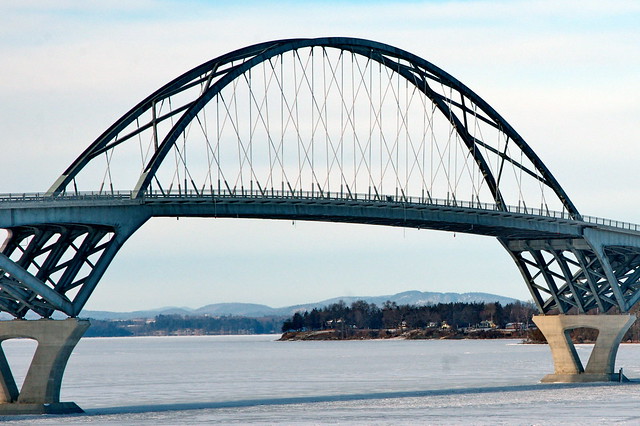The communication needs of humans have led to the creation of different media like cars, boats, airplanes. In order to develop the communication will need to join at different geographical points, creating communication networks. Such networks are made up of different components, including the bridges.
A Bridge according to Merriam- Webster Dictirionary is a structure carrying a pathway or roadway over a depression or obstacle, so basicallyis is a structure built to span a gorge, valley, road, railroad track, river, body of water, or any other physical obstacle and the can be used as road bridges, aqueducts, for walking, railways, etc.
There are six main types of bridges: beam, truss, cantilever, arch tied, suspension, and cable-stayed.
Beam bridges: Beam bridges are horizontal beams supported at each end by substructure units and can be either simply supported when the beams only connect across a single span, or continuous when the beams are connected across two or more spans. When there are multiple spans, the intermediate supports are known as piers.

Truss bridges: is a bridge whose load-bearing superstructure is composed of a truss. This truss is a structure of connected elements forming triangular units.

Cantilever bridges: Cantilever bridges are built using cantilevers—horizontal beams supported on only one end. Most cantilever bridges use a pair of continuous spans that extend from opposite sides of the supporting piers to meet at the center of the obstacle the bridge crosses.

Arch bridges: Arch bridges have abutments at each end. The weight of the bridge is thrust into the abutments at either side. The earliest known arch bridges were built by the Greeks, and include the Arkadiko Bridge.
Tied arch bridges: Tied arch bridges have an arch-shaped superstructure, but differ from conventional arch bridges. Instead of transferring the weight of the bridge and traffic loads into thrust forces into the abutments, the ends of the arches are restrained by tension in the bottom chord of the structure. They are also called bowstring arches.

Suspension bridges: Suspension bridges are suspended from cables. The earliest suspension bridges were made of ropes or vines covered with pieces of bamboo. In modern bridges, the cables hang from towers that are attached to caissons or cofferdams.

Cable-stayed bridges: Cable-stayed bridges, like suspension bridges, are held up by cables. However, in a cable-stayed bridge, less cable is required and the towers holding the cables are proportionately shorter.

In the construction of bridges there are some types of materials that are used generally like: Stone, wood, steel, reinforced concrete, prestressed concrete, stressed concrete.
Bridges do not are only for cars, also are for pedestrian or trains. They are so important in human life because they do our comunication more easy and more fast so reducing the time between intermediaries
Sources
http://www.merriam-webster.com/dictionary/bridge
http://mrpopetech.weebly.com/bridge-types.html
http://en.wikipedia.org/wiki/Bridge
http://www.historyworld.net/wrldhis/PlainTextHistories.asp?historyid=ab97
Video Notes:
- The covered bridge are made of wood, becoming a really homelike space.
- The 3 bridge most large in the worlds are:
1. Lake Pontchartrain Causeway bridge (38.422 m)
2. Donghai bridge (31.500 m)
3. King Fahd Causeway bridge (25.000 m)
- The Brooklyn Bridge connects the island of Manhattan with the district of Brooklyn. It was the largest suspended bridge of the time. It was needed 4000 meters of steel wire.
- The tallest bridge of the world are Milau Bridge, this bridge rice 343 meters above the floor.
New Words:
- Truss: support for a roof or bridge that is usually made of stone or brick.
- Girder: a long thick piece of steel or concrete, etc. which supports a roof, floor, bridge or other large structure.
- Deck: a flat area for walking on, especially one built across the space between the sides of a boat or a bus; a type of floor.